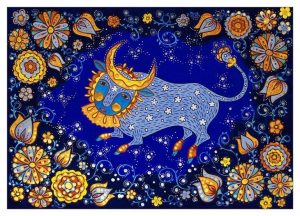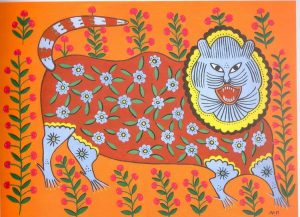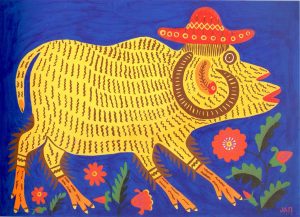
Mariya Prymachenko was a self-taught artist whose popular work of the naive or primitivism genre portrayed Ukrainian folk art based on animal and plant life. Many of her masterpieces are included in a collection of folk art at the Ukrainian National Museum in Kyiv.
Mysterious and emotionally charged, her phantasmogorical work depicts age-old traditions of Ukrainian master-craftsmen, bringing forth their understanding of good and evil, of ugliness and beauty. Mariya Prymachenko’s art interprets fabulous mythological creatures and takes its roots in folk legends and fairy tales, nourished bу the real life and culture of the Ukrainian реорlе.

Here are ten little-known facts about this brilliant Ukrainian artist:
At the age of seven, Mariya Prymachenko became seriously ill with polio. She endured terrible pain and surgery, and was obliged to move about on As she was unable to work in the fields with the family, young Mariya turned to drawing, painting and embroidery.

Mariya took up art seriously at the age of 17. She found some bluish clay and began painting the family home. The villagers liked her work and Mariya soon had her first commissions. One neighbour rewarded her with a pig. Subsequently, it was this pig that helped the family survive the famine.

During her studies in Kyiv, Mariya met a fellow villager, an infantry lieutenant called Vasyl Mary The couple did not have much time together as Vasyl was soon called up for military duty in the front lines. Their son Fedir was born, but the couple was never re-united. Vasyl died in battle and Mariya never found out where he was buried.On the eve of her beloved’s death, she had a strange dream: a garden where all the plants grew in the opposite direction - the roots emerged from the soil and climbed towards the sky, while the flowers and bushes grew into the ground. After Vasyl’s death, she embroidered a table cloth with black roses and covered her table with it. She mourned her husband for a long time, abandoning all creative work.

It is hard to believe, but despite her talent, Mariy and her son had a very difficult Little by little, they built a small home in in their backyard because the original family house was decrepit, with crumbling walls. Mariya never accepted money for her paintings; she always gifted them to friends and neighbours. Screenwriter Oleksandr Rozhen recalled a story told by a journalist friend: Mariya Prymachenko had won some sort of prize, but when the journalist met her, she was very upset, and later the he learned that her prize had been transferred to the Peace Fund.

Two years before her death, Mariya dreamt that she was in paradise. In the middle of the cloud, there was a large table with some paper and paints. Mariya was so happy to enter a paradise where she could draw and paint to her heart’s content. She asked: “Are the weekends free? Do we have time to rest?” “No!” they said. “Then, I’d better stay on earth; I’ll have all the time in the world to do as I please!” she replied.

Mariya longed to mobilize many other artists, organize a creative group and paint all the buildings and houses in the cities: “… What wonders we could create! Not only would the gardens and parks in Kyiv bloom, but also the streets and avenues… the houses would look down and smile at the passers-by…”

Mariya’s son Fedir, as well as her grandchildren Peter and Ivan, also became artists.

In 2006, the Prymachenko home, where her son Fedir lived, was robbed. Over 70 works of art were stolen, each worth up to $10,000 at that time. The police recovered some of the paintings, but many were lost and most likely re-sold on the black market.

In 2007, Mariya Prymachenko's painting A Rat on the Road was copied by the famous Finnish designer Kristina Isola in her fabric design Folks in the Woods,
which was subsequently used by Finnair, as part of a deal with Finnish clothing and home furnishings retailer Marimekko to provide textiles and tableware on board the airline’s flights.

Helsingin Sanomat newspaper reported about almost identical similarity between Marimekko’s pattern from 2007 and the 1963 painting by the late Ukrainian folk artist Mariya Prymachenko. Designer Kristina Isola and the company confessed and apologized for the plagiarism, which was viewed as a serious copyright violation. “I didn’t think about copyright or that I took someone else’s creative work,” Isola said in a statement.


Mariya Prymachenko was distinguished as Laureate of the Taras Shevchenko National Prize in 1966, Honoured Artist of the USSR in 1970, and People’s Artist of Ukraine. UNESCO declared 2009 as the year of Mariya Prymachenko. 


